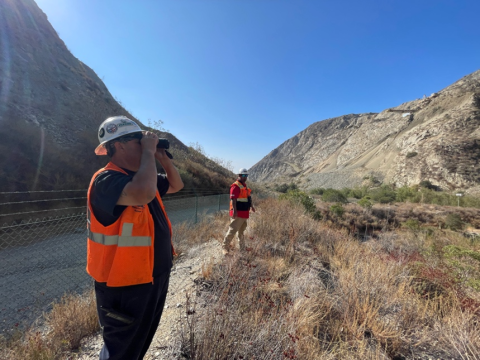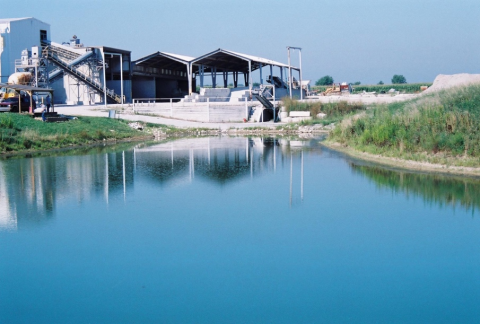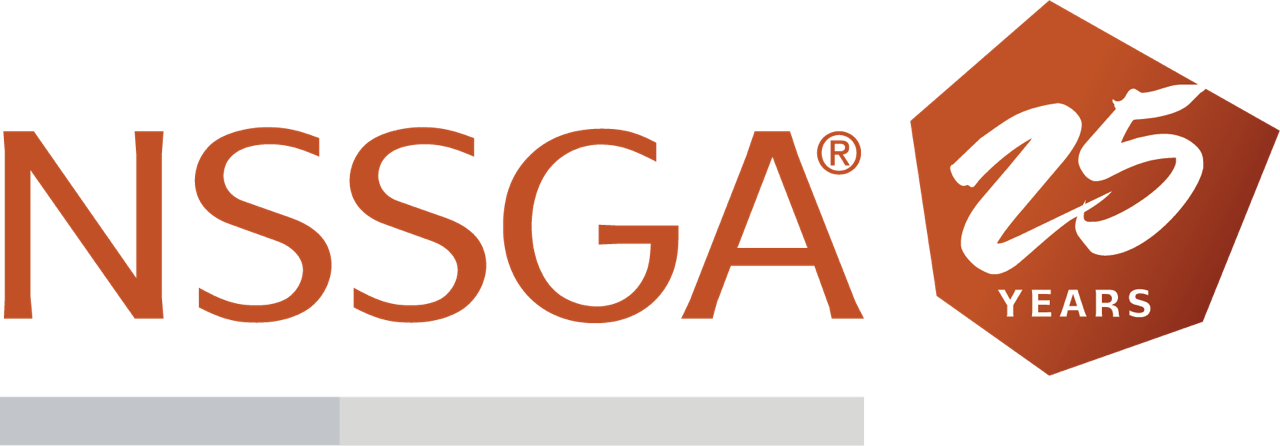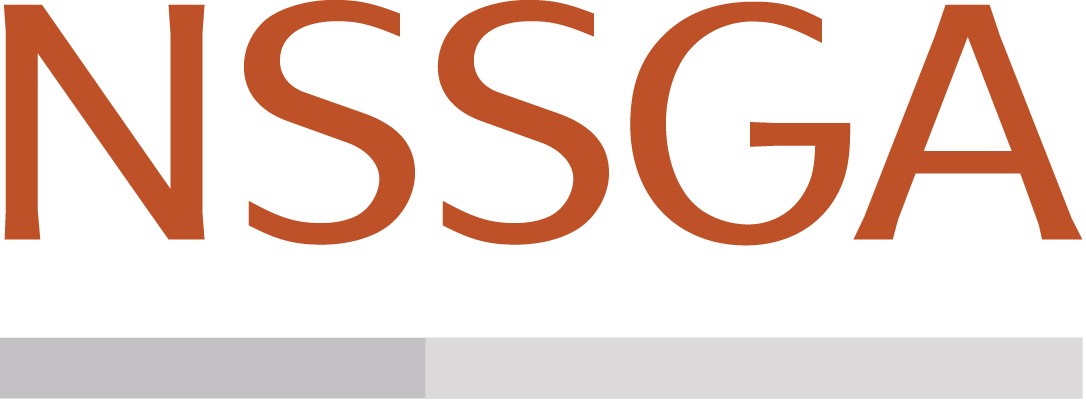Improving Reclamation Efforts Through Nature-Based Solutions

By Joey Mendolia, Wildlife Habitat Council
There is a growing need for sustainable practices that balance the aggregates industry’s operational requirements with ecological conservation. Enter Nature-based Solutions—a transformative approach that not only improves reclamation efforts but also benefits local communities and biodiversity for future generations.
Nature-based solutions involve the use of ecological principles to restore and enhance landscapes. They prioritize the creation of sustainable ecosystems that support biodiversity, improve air and water quality and provide recreational opportunities. In the aggregates industry, these solutions are critical for addressing the environmental disruptions intrinsic to mining operations. They often go beyond regulatory compliance by actively restoring landscapes and ecosystems affected by mining activities. In this process of ecosystem restoration, companies must give equal consideration to environmental conservation, community needs and business objectives.
Industry Leaders’ Commitment to Community Engagement and Reclamation
Within the NSSGA, many industry members are integrating nature-based solutions into reclamation efforts. These initiatives not only showcase a commitment to environmental stewardship, but also serve as models for sustainable practices across the industry.
The following case studies represent a broader shift in the industry toward nature-based solutions in reclamation, extending beyond environmental conservation and encompassing biodiversity advancement, creation of educational opportunities and strengthening of community ties.

Vulcan Materials Company’s Azusa, California Facility
Vulcan Materials Company stands as a testament to the potential of nature-based solutions in reclamation. The Azusa Rock Quarry, situated east of Los Angeles, won the 2019 Wildlife Habitat Council (WHC) Other Habitats Project Award, which recognized Vulcan’s commitment to managing chaparral and coastal sage scrub habitat on the site.
The reclamation efforts at Azusa Rock Quarry included the transformation of "Mayan Steps," large benches from the discontinued quarry, into micro-benches. These micro-benches, now only two feet deep by two feet high, were meticulously seeded with native plants and grasses, aligning the landscape more closely with the surrounding San Gabriel Mountains, which lie in the Southern California Lower Montane Shrub and Woodland ecoregion. Vulcan also implemented a rigorous invasive plant removal and control program, surpassing regulatory requirements.
Cemex Ready-Mix USA Facilities
Cemex, through its Ready-Mix USA facilities, takes a unique approach to nature-based solutions by focusing on pollinator-friendly vegetation. As part of an employee engagement and wildlife conservation program, over 25 employees actively participated in planting milkweed to support monarch butterfly habitat. As a further engagement with monarch conservation, in Phenix City, Alabama, Ready-Mix USA employees reared, tagged and released over 60 monarch butterflies in participation with Monarch Watch—a citizen-science study to monitor monarch populations. Additional Cemex nature-based solutions projects include planting over 150 native trees at a local park in coordination with Ruffner Mountain Nature Preserve near Birmingham, Alabama.

Covia’s Responsible Stewardship of Land
As a steward of approximately 75,000 acres of land globally, Covia has embedded responsible land use practices into its operations. The company has been instrumental in restoring diverse ecosystems, including wetlands, forests, ranch lands and shorelines. A notable example is the reclamation of a Covia mine and plant site in Huntingburg, Indiana. With local community input, the company embarked on reclaiming a seven-acre former clay pit for agriculture, requiring the elimination of steep slopes and water features. Employee team members backfilled and graded the land, applied soils to replicate the original horizon and layers and implemented vegetation and erosion control measures. Future improvements include the construction of a water control structure to mitigate erosion.
Community Engagement as a Corporate Responsibility
These examples from Vulcan, Cemex and Covia exemplify the industry’s recognition of community engagement’s importance as a strategic imperative for establishing an inclusive and lasting nature-based solution for reclamation. By actively seeking input from and involving local communities, educational institutions and other stakeholders, reclamation efforts can produce the follow benefits to communities:
- Access to green space
- More biodiverse yards and neighborhoods
- Educational opportunities for youth
- Greater equity for marginalized groups
- Empowerment in the face of environmental challenges
Meaningful community engagement that goes beyond transactional interactions or conventional corporate philanthropy can greatly enhance a company’s ability to establish, maintain or restore social license to operate (SLO)—a critical need to navigate potential challenges and secure the necessary approvals and permits for future operations.
Once established, SLO needs to be maintained through ongoing community outreach, and engagement strategies should be kept current with an attention to new data, policy changes and shifts in community opinions and needs. As the current biodiversity and climate crises become more dire, and more opportunities for the private sector to address these issues arise, expectations for companies to act quickly, transparently and in conjunction with scientific consensus will continue to grow.
WHC’s Role in Industry Transformation
WHC partners with companies to advance their biodiversity, sustainability, employee engagement and community relations goals. WHC’s work with NSSGA members and other organizations in the building materials sector has been instrumental in driving meaningful programs that benefit both people and nature, resulting in 632 programs in 19 countries and 45 U.S. states.
WHC programs emphasize the importance of engaging team members at the facility level, attracting and retaining talent, and educating the next-generation workforce through STEM-based, experiential learning opportunities. These initiatives offer a pathway to a more sustainable and harmonious future where industry and nature coexist in balance.
Moreover, by aggregating these efforts at the corporate level, companies can showcase their collective impact across operations. From sustainability reporting through the Global Reporting Initiative (GRI) and the Dow Jones Sustainability Index (DJSI) to annual sustainability reports, conservation programs underscore the industry’s commitment to environmental stewardship and community engagement.
Opportunities and Future Directions
As the aggregates industry continues to evolve, there are numerous opportunities for expanding community engagement and nature-based solutions in reclamation. Companies can explore innovative approaches that adapt to different operational contexts. Whether it’s the transformation of quarries into nature reserves or the creation of sustainable agricultural spaces, the possibilities are vast, and the benefits to companies and communities are numerous. Moreover, industry-wide collaboration is key to successful reclamation practices. By sharing knowledge, best practices and resources, companies can collectively drive positive change and reaffirm to regulators their commitment to sustainability.
The aggregates industry’s ongoing commitment to improving reclamation efforts through nature-based solutions is a testament to its dedication to environmental stewardship, community engagement and long-term sustainability. NSGGA companies are not only building infrastructure but also cultivating a legacy of responsible practices that benefit the planet, local communities and future generations.
Contact and Resources
To learn more about WHC’s work with companies engaging in biodiversity projects, visit www.wildlifehc.org. Browse WHC programs, member spotlights, free live and on-demand webinars, and topic-specific white papers and thought leadership. If your company is interested in discussing tailored approaches for specific needs and opportunities, please contact us at jmendolia@wildlifehc.org.
Originally published in Nov./Dec. 2023 in the Stone, Sand & Gravel REVIEW.

